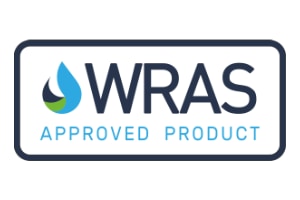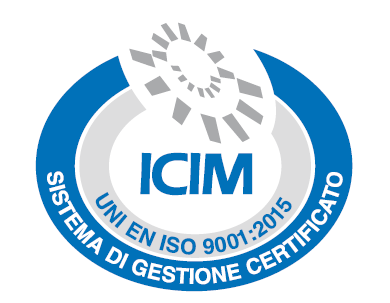Menu
On the occasion of World Water Day, celebrated on March 22 and which this year carries the significant title “Water for Peace,” we wish to share the encouraging results of a survey that offers an illuminating perspective on the architecture and design sector. World Water Day represents a moment of global reflection on the vital importance of this resource and its role in conflicts and cooperation between communities and nations. In this context, architects and designers have a crucial responsibility in promoting sustainable practices and choosing materials that not only respect the environment but also promote human well-being. Thus, in this spirit of progress and collective commitment, here are the outcomes of a survey conducted during a recent webinar dedicated to sustainability, in which Idral participated as a sponsor.
In recent years, the call for sustainable development has resonated in every sector of society, and the world of architecture and design is no exception. A recent webinar on sustainability in the construction sector revealed architects’ and designers’ current views on environmental issues. Through a series of questions, participants were asked to express their opinions on issues related to the lead content in building materials, the importance of products meeting minimum environmental criteria, and the value of sustainability in corporate ethics. The sample is 87 architects and designers’
The CAM, an acronym for Minimum Environmental Criteria, are defined standards and requirements to promote sustainable practices and direct the market towards a more sustainable offer. 92% of participants believe it is essential that products meet or exceed these criteria. Such strong consensus indicates a shift in the industry toward an almost unanimous agreement on the importance of environmental compliance. In the construction industry, respecting the CAM in new buildings or renovation projects encourages the use of materials and processes that minimize the use of non-renewable resources, reduce greenhouse gas emissions, and limit waste generation. Moreover, the CAM encourages innovation and can improve the quality and durability of buildings. For this reason, Idral’s products help to reduce water waste, an increasingly scarce and precious resource, promoting more responsible and conscious development in construction.
The importance given to corporate sustainability in product choices is also high. 89% of the architects and designers surveyed consider a company’s sustainability an important or very important factor. This is a clear signal for companies to not only conform to producing environmentally friendly products but to follow sustainable practices in processes, operating in compliance with principles that respect and promote ecological balance, social equity, and sustainable economy. This implies adopting policies ranging from reducing the carbon footprint and efficient resource use to worker well-being and corporate social responsibility. Being in line with such criteria does not limit to complying with minimum environmental regulations but extends the company’s commitment to more sustainable operations, transparency, and product traceability, and in the case of Idral, it also implies continuous innovation towards processes and products that anticipate future sustainability standards.
This chart shows that an impressive 86% of participants are interested, to varying degrees, in products in contact with drinking water having low lead content or being lead-free. It is not just a preference but a priority, as clean drinking water has become a global concern and professionals are recognizing their role in promoting and using safer materials. Indeed, the presence of lead in products that come into contact with drinking water represents a serious threat to public health. Lead is a toxic metal that, even at low concentrations, can accumulate in the human body, causing damage to the nervous system, disorders in the cognitive development process of children, and other serious health conditions.
Moreover, an overwhelming majority, almost 80%, of respondents would be willing to pay a higher price for products with low or no lead content. This is a clear sign that health and environmental safety are taking precedence over costs, a significant change in a sector where budgets often dictate decisions.
It is therefore of crucial importance that products intended for use with drinking water, such as pipes and sanitary fittings, are made with materials that have low lead content or are completely lead-free. The reduction or elimination of lead in these products not only protects individuals’ health but also contributes to preserving the integrity of water resources. Water is a vector that can carry contaminants from one source to another, therefore ensuring water purity at the source means protecting health on a broader scale, avoiding the spread of toxins in the environment.
Adopting rigorous standards for products in contact with drinking water is a fundamental step towards promoting a healthy and sustainable environment on which Idral is actively working. Being conscious and responsible in the choice of materials reflects a long-term commitment to public health and environmental protection, in line with the principles expressed on World Water Day “Water for Peace,” which link the conservation of water resources to peace and collective well-being.
These results reveal an important trend: the industry is not just open but actively expects higher standards of environmental responsibility. Architects and designers are willing to invest more not only financially but also in terms of research and development, to align with sustainable practices.
The implications of these findings are extensive. They suggest that manufacturers and companies must adapt to meet the evolving demands of the market. Those who invest in sustainability in both their products and their production processes and business practices are likely to find favor in an increasingly environmentally-driven market.
In conclusion, the survey conducted during the sustainability webinar paints an encouraging picture of a field in transition. Architects and designers are actively shaping a future where the construction industry can coexist harmoniously with the natural environment. Businesses and public administration must pay attention to these trends and work together with professionals to ensure that principles of sustainability become deeply embedded in every layer of the construction industry.




Keep up to date
Idral S.p.a. a socio unico – Via Isei 8/10 – 28010 Gargallo (NO) Italia
Cap. Soc. € 660.000 i.v. | C.F. e Iscr. reg. imp. NO 00124610031 | REA n° 104665 | C.C.I.A.A. Novara | P.IVA 00124610031